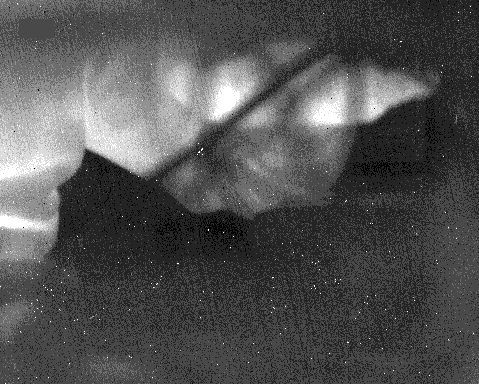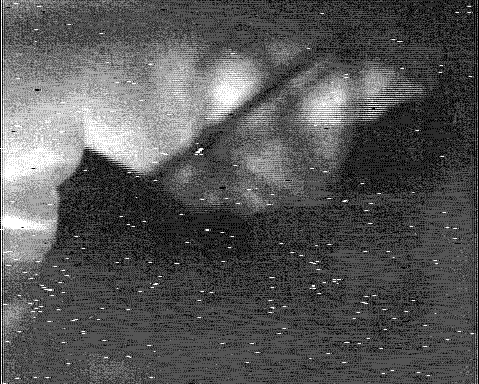donehere
Newbie level 3
Hello,
I guess I'm facing Analog to Digital and vice versa artifacts, and need some help.
Ok, I have a digital image and I firstly do DAC and then I do ADC. My original image is on the left and on the right is the DAC->ADC processed one:


Since the images above have such low contrast, the adjusted ones are below:


If you look at last two images, there are two obvious differences,
1. There is the interlacing artifact.
2. Dead pixels, which are represented as white dots, on the original image appear as horizontally amplified on the processed image. I mean a single white dot is replicated as several white dots horizontally adjacent to each other.
I know why (1) occurs, but I am not quite sure on the reason for (2). My guess is somewhere during the DAC and ADC, analog circuit components can't keep up with the sharp contrast between the dead pixel and the pixels on the right and on the left next to the dead one.
If you look at the first two images (low-contrast) ones, what you see is that they have the same number of white pixels (dots); but when I adjust the contrast I discard some of light-gray pixels and make them completely white, and they appear as white pixels next to original dead white pixels (ODWP). This suggests, in the processed image, pixels adjacent to ODWP are a lighter shade of gray compared to the pixels in the original image; which makes me think DAC or ADC circuit can't jump from zero white to some contrasting dark gray or vice versa. Instead it does the transition in several pixels.
What do you think, do I have reasonable arguments or am I completely missing the point?
Thanks in advance.[/img]
I guess I'm facing Analog to Digital and vice versa artifacts, and need some help.
Ok, I have a digital image and I firstly do DAC and then I do ADC. My original image is on the left and on the right is the DAC->ADC processed one:


Since the images above have such low contrast, the adjusted ones are below:


If you look at last two images, there are two obvious differences,
1. There is the interlacing artifact.
2. Dead pixels, which are represented as white dots, on the original image appear as horizontally amplified on the processed image. I mean a single white dot is replicated as several white dots horizontally adjacent to each other.
I know why (1) occurs, but I am not quite sure on the reason for (2). My guess is somewhere during the DAC and ADC, analog circuit components can't keep up with the sharp contrast between the dead pixel and the pixels on the right and on the left next to the dead one.
If you look at the first two images (low-contrast) ones, what you see is that they have the same number of white pixels (dots); but when I adjust the contrast I discard some of light-gray pixels and make them completely white, and they appear as white pixels next to original dead white pixels (ODWP). This suggests, in the processed image, pixels adjacent to ODWP are a lighter shade of gray compared to the pixels in the original image; which makes me think DAC or ADC circuit can't jump from zero white to some contrasting dark gray or vice versa. Instead it does the transition in several pixels.
What do you think, do I have reasonable arguments or am I completely missing the point?
Thanks in advance.[/img]

